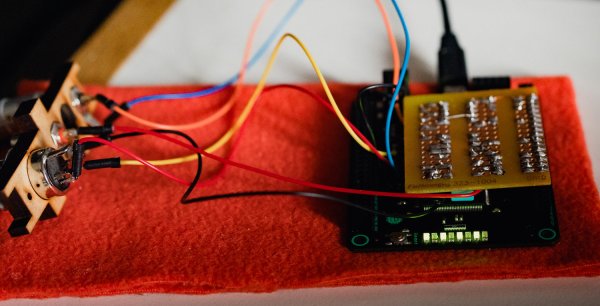[Dr. Suess] created memorable books with minimal words and bright artwork. He inspired children and adults alike, and one of them, [Len], grew up to create wind instruments for the Bellowphone channel on YouTube. Behind the whimsy of his creations is significant engineering, and this time, we get to see the construction of a fipple. The video is also shown after the break. Even though fipple sounds like a word [Dr. Suess] would have coined, it is a legitimate musical term that means a whistle-like mouthpiece. In this case, it blows air across glass jars to create the sound for [Len]’s bottle organ. Check out the second video below for a performance from The Magic Flute.
[Len] uses clear rigid PVC for the fipples and a custom forming die to shape them while they are soft. The rest is precision hand-tool work with a razor saw, hand file, and wet-dry sandpaper. Once complete, the fipple looks like any musical instrument part produced by exacting construction techniques. Making a mouthpiece is one thing, but if it is not directed correctly it will not make any sound, so we also learn how to turn steel strapping into an organ bottle assembly. If you add some tubing and rubber squeeze balls, you can make your own instrument.
Part of the reason the Bellowphone channel exists is that [Len] found a lot of support in the pipe organ community that showed him the secret inner workings of their livelihood and now is his chance to share that enthusiasm with the maker community.
Continue reading “Forming Fipples And Accompanying Accoutrements”






















